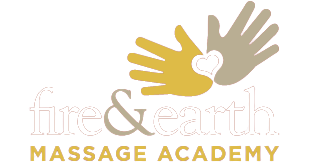What is Golfer’s Elbow and How Do I Get Rid Of It?
Posted on 6th July 2020
Golfer’s elbow (medial epicondylitis) sounds like only golfers suffer but that is not the case. It causes incredible pain and can affect people who grip, type or use their arms for manual work. So, what is it and how does it happen?
Golfer’s Elbow Explained
Golfer's elbow is often caused by overusing the muscles in the forearm which you use to grip, rotate your arm, and flex your wrist. Repetitive flexing, gripping, or swinging can cause pulls or tiny tears in the tendons.
Cousin of the equally oddly named “tennis elbow” this condition affects the muscles and tendons that control the wrist and fingers. The pain goes through the muscles and tendons that attach into the bony bump (medial epicondyle) of the elbow and the pain can be felt through the forearm and wrist.
Similarly to the tennis elbow condition, you don’t even have to play the sport to suffer from the condition.
What can cause golfer’s elbow?
Being an RSI (repetitive strain injury), overuse or improper use affects it. Repeated use of the wrist in sports or work, for example throwing and hitting, such as in baseball or javelin, improper technique such as in weightlifting, and jobs such as plumbing and carpentry can all contribute to the condition. In fact, any forceful and repetitive movement can put you at greater risk, especially when performed for at least 2 hours a day.
How do I tell if the pain is golfer’s elbow?
Pain and tenderness will be felt usually on the inner elbow but also on the inner forearm. Certain movements can make it worse, such as forming a fist. A weakness may be felt in the hands and wrists and numbness and tingling may radiate into the fingers, usually the ring and little fingers. The pain may also come on gradually or all of a sudden, with certain movements causing more pain.
What can be done to prevent golfer’s elbow?
Prevention is always best, strengthening the forearm muscles by using light weights or a tennis ball, and squeezing and holding helps. Simply by strengthening these muscles greatly increases their capacity to absorb physical stress. Stretching before activity is recommended, as with all activity.
A series of dynamic and static stretches should always be undertaken. Fixing your form will always help, particularly in the gym. Use the instructors on hand to correct your form if necessary. Also make sure you’re using the correct equipment for example in racket sports.
Knowing when to rest is key. Quite simply, if too much pain occurs then stop.
How can sports massage help golfers elbow?
As sports massage therapists we can provide great soft tissue treatment that will help to stimulate the healing process and reduce the muscular tension. This also increasing the function of the muscular tissue and enables the client to get back to their sport or work pain free.
As an RSI issue regular massage can really prevent this from re occurring and monthly massages are recommended particularly if the client will be continuing with the activity that caused this in the first place.
Learning sports massage to help with golfers elbow
Have you ever been injured and wondered how to best fix it? Starting a level 3 sports massage course can start you off on the journey to helping others get out of pain adn back onto teh golf course.
Find out how to start your journey by clicking the button below.
Share this post:

